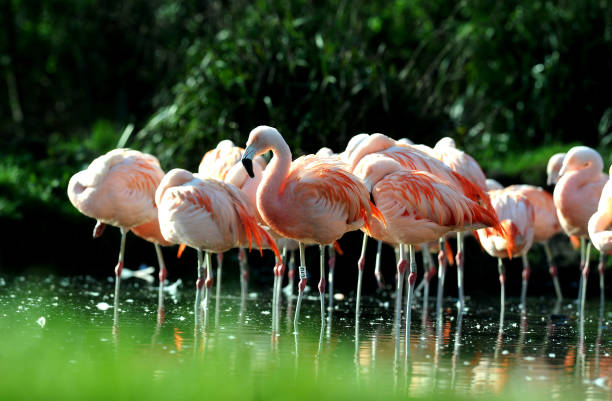
Oh for a day in the white wind’s cheek,
To share the mallard’s stroke of power; To follow the rush of the upper air,
And flying a hundred miles an hour.
The habits of the mallard are different from those of the redhead or canvasback, those of the blue-wing or green-wing teal are different from those of the wood duck and those of the bluebill are different from the pintail or Goldeneye.
Wild ducks may be divided into two classes, deep-water ducks and shoal-water ducks. The first named dive for their food. The latter does not. When wounded, shoal-water ducks go upon land at once and seek to hide in the rushes or brush. Deep-water ducks never go upon the land and seek to escape by swimming and diving. The deep-water ducks include bluebills, redheads, canvasbacks, goldeneyes, and several smaller varieties; the shoal-water ducks are mallards, pintails, blue and green-wing teal, wood ducks, widgeons or baldpates. gadwalls, etc.
Big bags of ducks are a thing of the past now, which is as it should be. The amount of game secured should be a .secondary consideration to all true sportsmen, the chief pleasure should be that of enjoying the benefits of outdoor life.
Nowadays if a hunter secures a few ducks he should be satisfied. One day last October on a day’s hunt I bagged eight blue-wing teals and had as much pleasure as if it were a much larger number. I had the pleasure of being out in the glorious autumn weather and a grand trip on the old Illinois. I would have enjoyed it if I had not shot any ducks.
All deep-water ducks always rise against the wind. By taking advantage of this fact and approaching them with the wind at your back, if the flock is a small one, very often you can row near enough to get a good shot, as they hesitate about coming towards you until it is too late and you are within range of them as they arise.
During considerable hunting on the Platte and Missouri Rivers, I was surprised to find how much more plentiful the spoonbill was than farther east. They never afford a great deal of sport to the hunter at any time, however.
On some days when the ducks are not moving about much, one can get considerable sport by rowing along a river that is fringed by willow trees and rashes and shooting the ducks as they fly away from shore at your approach. They are usually on the wing before you discover them. Also at times, one can have similar sport by walking along the edges of ponds where there are rushes, pond-lilies and other aquatic plants by which the birds are concealed until you are within gun-shot as they take wing.


